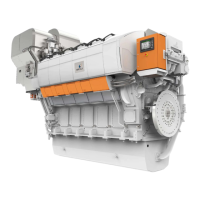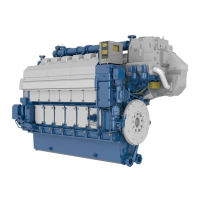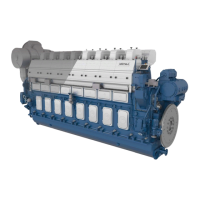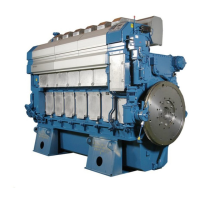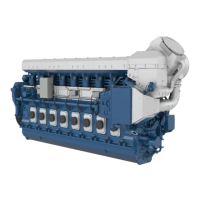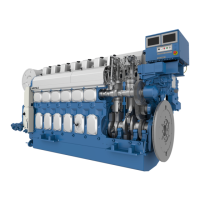Do you have a question about the Wartsila 31SG and is the answer not in the manual?
Details maximum continuous power output ratings for various engine configurations.
Provides dimensional drawings and weight specifications for engine configurations.
Explains controlled load increase essential for supercharged engines during transients.
Provides recommended limits to avoid engine fouling during low load operation.
Presents detailed technical specifications for the Wärtsilä 8V31SG engine.
Presents detailed technical specifications for the Wärtsilä 10V31SG engine.
Details key engine components such as the engine block, crankshaft, and connecting rod.
Guidelines for selecting pipe dimensions considering material, pressure loss, and velocity.
Instructions for ensuring cleanliness during pipe installation and onboard methods.
Specifies quality requirements for natural gas used as fuel in the Wärtsilä 31SG engine.
Lists properties required for engine lubricating oils, including viscosity and ash content.
Details the design of the starting air system, including receivers and compressors.
Recommendations for dividing engines into circuits and designing external cooling systems.
Details the UNIC system, its modules, ingress protection, and ambient temperature limits.
Explains engine start, stop, shutdown, emergency stop, and speed control functions.
Lists external forces and couples produced by engine configurations for ship designer reference.
Details typical exhaust sound power levels emitted from the turbocharger outlet.
Outlines required working space, engine room height, lifting equipment, and maintenance platforms.
| Engine Type | 4-stroke, spark-ignited gas engine |
|---|---|
| Fuel | Natural Gas |
| Number of Cylinders | 12, 16, 20 |
| Bore | 310 mm |
| Stroke | 430 mm |
| Thermal Efficiency | 50% |
| Speed | 750 rpm |
| Mean Piston Speed | 10.3 m/s |
| Specific Fuel Consumption | 7300 kJ/kWh |
| Displacement per Cylinder | 32.7 dm³ |
| Power Output (V20) | 11600 kW |
| Emissions Compliance | IMO Tier III |
| Cylinder Arrangement | In-line or V |
